Name HMS Nerissa Ordered 15 April 1939 Laid down 26 July 1939 Construction started 26 July 1939 Beam 11 m | Cost £400,963.16s Length 109 m Launched 7 May 1940 Builder John Brown & Company | |
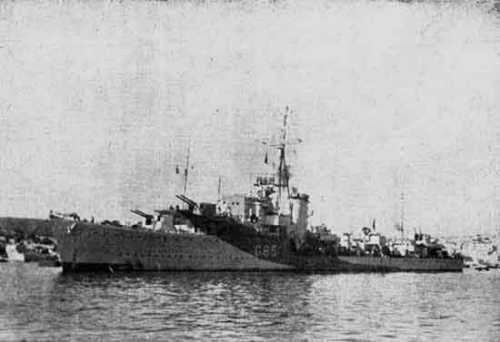 | ||
Notes Transferred to Polish Navy, October 1940 | ||
Orp piorun g65
ORP Piorun was an N-class destroyer used by the Polish Navy during the Second World War. The name is Polish for lightning. Ordered by the Royal Navy in 1939, the ship was laid down as HMS Nerissa before being acquired by Poland in October 1940 before completion. Following the Second World War, the vessel was returned to the Royal Navy and recommissioned as HMS Noble until being discarded in 1955.
Contents
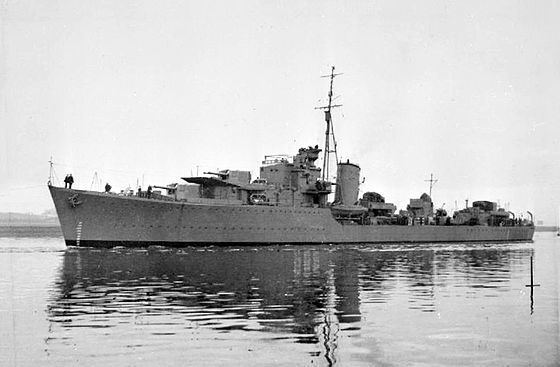
History
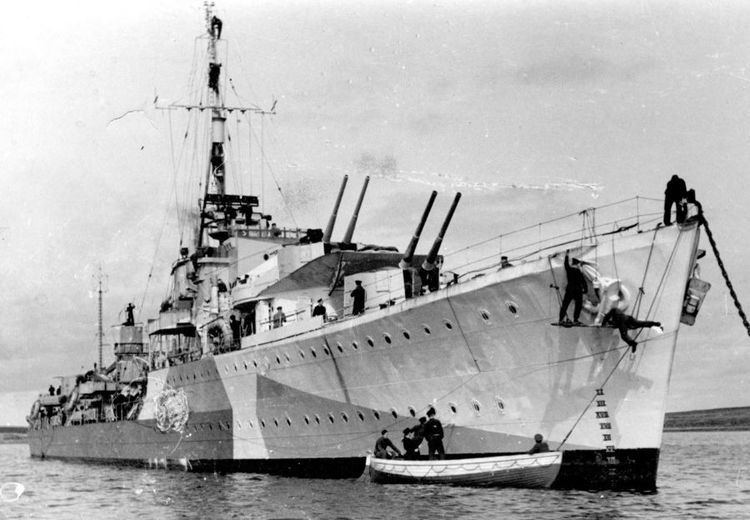
The ship was built by John Brown & Company of Clydebank, Glasgow. She was laid down in July 1939, launched on 7 May 1940 and completed on 4 November 1940. Initially commissioned into the Royal Navy as HMS Nerissa, she was later transferred to the Polish Navy as a replacement for the destroyer ORP Grom, which had been lost off the Norwegian coast on 4 May 1940.
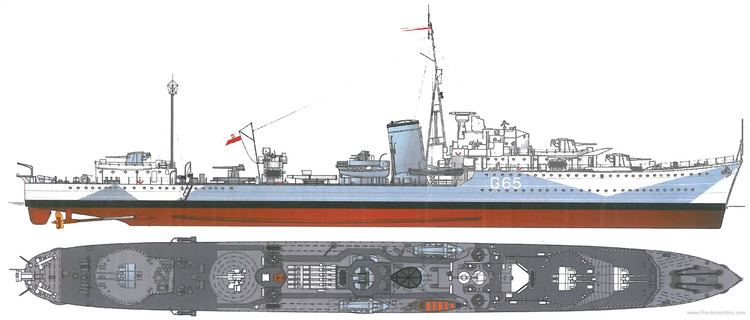
Piorun was based in Great Britain and commanded by Commander Eugeniusz Pławski. Between 13 and 15 March 1941, while undergoing repairs in John Brown's shipyard, she took part in the defence of Clydebank against air raids by the Luftwaffe. A memorial to the crew of the ship was later erected in Clydebank.
Bismarck action

On 22 May 1941, Piorun, with ships of the British 4th Destroyer Flotilla (HMS Cossack, HMS Maori, HMS Sikh and HMS Zulu), commanded by Captain Philip Vian, provided additional escort to troop convoy WS8B en route from Glasgow to the Indian Ocean. On 25 May, Vian's destroyers (including Piorun) were detached from the convoy to join the search for the German battleship Bismarck.
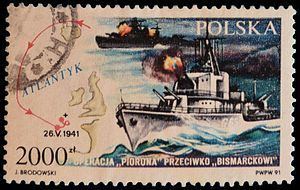
Piorun took part, along with the British destroyers, in the search for Bismarck (she was the first of the destroyers to spot the German ship). She joined in the shadowing of and torpedo attacks on the German battleship the night before Bismarck was sunk. Arriving first on the scene with the British Tribal-class destroyer Maori, Piorun charged at Bismarck by herself, while Maori manoeuvred for position to fire torpedoes. Alone, Piorun exchanged fire with Bismarck for half an hour with neither side scoring any hits—although after the third salvo, Bismarck missed by only 20 yards (18 m), causing Pławski to pull away. According to one report (detailed at the Auschwitz I exhibition, Oświęcim, Poland), Pławski transmitted the message "I am a Pole" before commencing fire on Bismarck; other sources claim that the signal to commence fire was "Trzy salwy na cześć Polski" (Three salvoes for the glory of Poland). This manoeuvre and the subsequent withdrawal caused Piorun to lose contact with Bismarck. Piorun was very low on fuel, so at 05:00, she was ordered home before she had used her torpedoes. Pławski was reluctant to leave the area and ignored Vian's order for an hour before returning to the United Kingdom.
Subsequent activity

Piorun subsequently operated in the Mediterranean, taking part in Operation Halberd, one of the Malta convoys and Operation Husky, the invasion of Sicily. In 1944 she was transferred to the Home Fleet.
Piorun took part in Operation Deadlight, and took part in the sinking of the captured German Type XXI submarines U-2329, U-2334, U-2335, U-2337, U-2350 and U-2363.
She was returned to the Royal Navy in 1946, as HMS Noble and scrapped in 1955.
